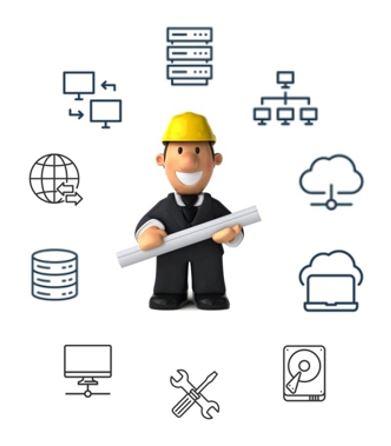Securing Your Online Accounts: Strategies for Optimal Security

In an era of increasing digital dependence, securing online accounts has become crucial for both individuals and businesses. You need Strategies for Optimal Security. With cybercriminals devising new ways to exploit vulnerabilities, it is essential to implement robust security measures to safeguard sensitive information. This article will outline various methods and ideas to secure your online accounts, helping you stay one step ahead of potential threats.
- Strong and Unique Passwords
A strong and unique password is the first line of defense against unauthorized access. Avoid using easily guessable information, such as birthdays or names, and instead use a combination of upper and lower case letters, numbers, and special characters. Ensure that each account has a distinct password, as reusing passwords can lead to multiple accounts being compromised simultaneously.
- Password Manager
Remembering numerous strong and unique passwords for each account can be challenging. Password managers are a secure solution to this problem, as they store your login credentials in an encrypted format, allowing you to access all your accounts with a single master password. Consider using reputable password managers like LastPass, Dashlane, or 1Password.
- Two-Factor Authentication (2FA)
Two-factor authentication adds an extra layer of security by requiring users to provide additional verification, usually in the form of a code sent to a trusted device. This prevents unauthorized access, even if a password has been compromised. Enable 2FA on all accounts that support it and choose an authenticator app like Google Authenticator, Authy, or Microsoft Authenticator for added security.
- Regularly Update Software and Devices
Keeping your operating system, applications, and devices updated ensures that the latest security patches are installed. These updates often fix vulnerabilities that can be exploited by cybercriminals. Enable automatic updates whenever possible and keep an eye out for new releases.
- Monitor Account Activity
Regularly monitoring your account activity can help you detect suspicious activities and respond quickly to potential breaches. Most platforms offer notifications for account logins, password changes, or other unusual behavior. Adjust your account settings to enable these notifications and be vigilant in reviewing them.
- Secure Your Email Account
Email is often the gateway to other online accounts, making it a prime target for hackers. Use a strong, unique password, enable 2FA, and consider using an encrypted email service like ProtonMail or Tutanota for added security.
- Be Wary of Phishing Scams
Phishing scams are attempts to trick users into revealing sensitive information, such as passwords or credit card numbers, by posing as a trustworthy entity. Be cautious when clicking on links in emails or text messages, and never provide personal information through unsecured websites. Look for signs of phishing, such as poor grammar, suspicious URLs, or requests for urgent action.
- Use a VPN
A virtual private network (VPN) helps protect your online activity by encrypting your data and masking your IP address. This makes it more difficult for cybercriminals to intercept your information or track your online activity. Reputable VPN services include ExpressVPN, NordVPN, and CyberGhost.
- Secure Your Wi-Fi Network
Ensure that your home Wi-Fi network is password-protected and encrypted using WPA2 or WPA3 security. Regularly update your router’s firmware and change its default login credentials. Disable remote management settings and consider setting up a guest network for visitors.
- Educate Yourself and Stay Informed
Stay informed about the latest cybersecurity threats and trends by following reputable sources like the National Cyber Security Alliance, Krebs on Security, or the SANS Internet Storm Center. Regularly educate yourself on best practices and attend webinars or conferences to stay up-to-date.
Securing your online accounts is an ongoing process that requires vigilance and commitment to best practices. By implementing strong and unique passwords, using password managers, enabling two-factor authentication, and staying informed about the latest cybersecurity threats, you can significantly reduce the risk of unauthorized access to your accounts. Regularly monitoring account activity and updating software and devices also play a crucial role in maintaining your online security. Adopt these strategies to safeguard your sensitive information and enjoy a safer digital experience.
Here is several post about securing on-line accounts: Security Archives – Texas Fixer
Here’s a summarized list of the top 5 reputable sources for information on securing your online accounts and staying updated on cybersecurity trends, along with their respective links:
- National Cyber Security Alliance (NCSA) – Provides resources and guidance to improve online safety and security for individuals, businesses, and educational institutions. (https://www.staysafeonline.org/)
- Krebs on Security – A blog by cybersecurity expert Brian Krebs, covering topics like data breaches, cybercrime, and security best practices. (https://krebsonsecurity.com/)
- SANS Internet Storm Center – Offers daily network security updates and insights on cybersecurity trends, vulnerabilities, and threats. (https://isc.sans.edu/)
- Electronic Frontier Foundation (EFF) – A nonprofit organization defending civil liberties in the digital world, offering resources on digital privacy, security, and online rights. (https://www.eff.org/)
- United States Computer Emergency Readiness Team (US-CERT) – Shares information on cybersecurity threats, vulnerabilities, and best practices, as part of the Department of Homeland Security. (https://www.us-cert.gov/)
